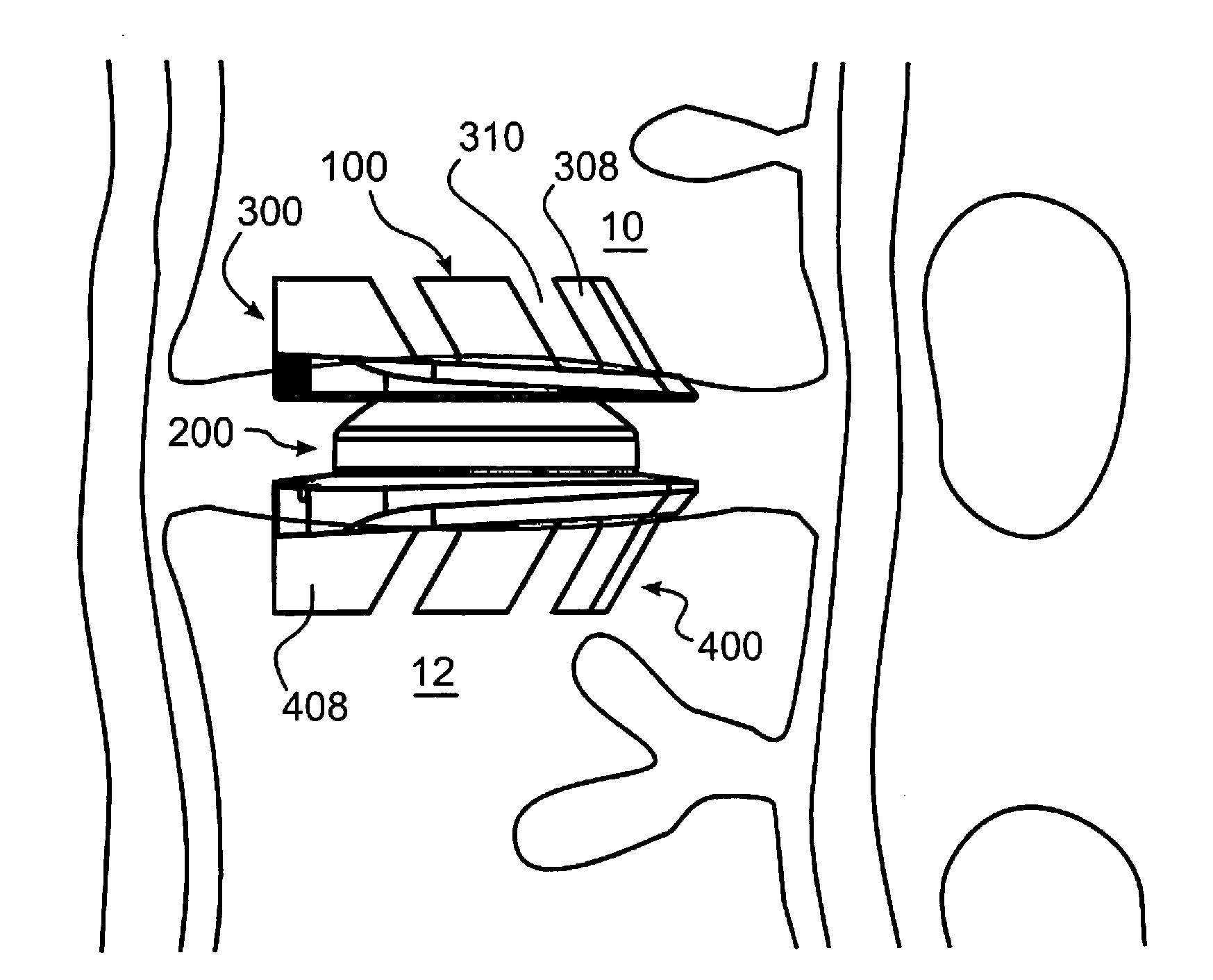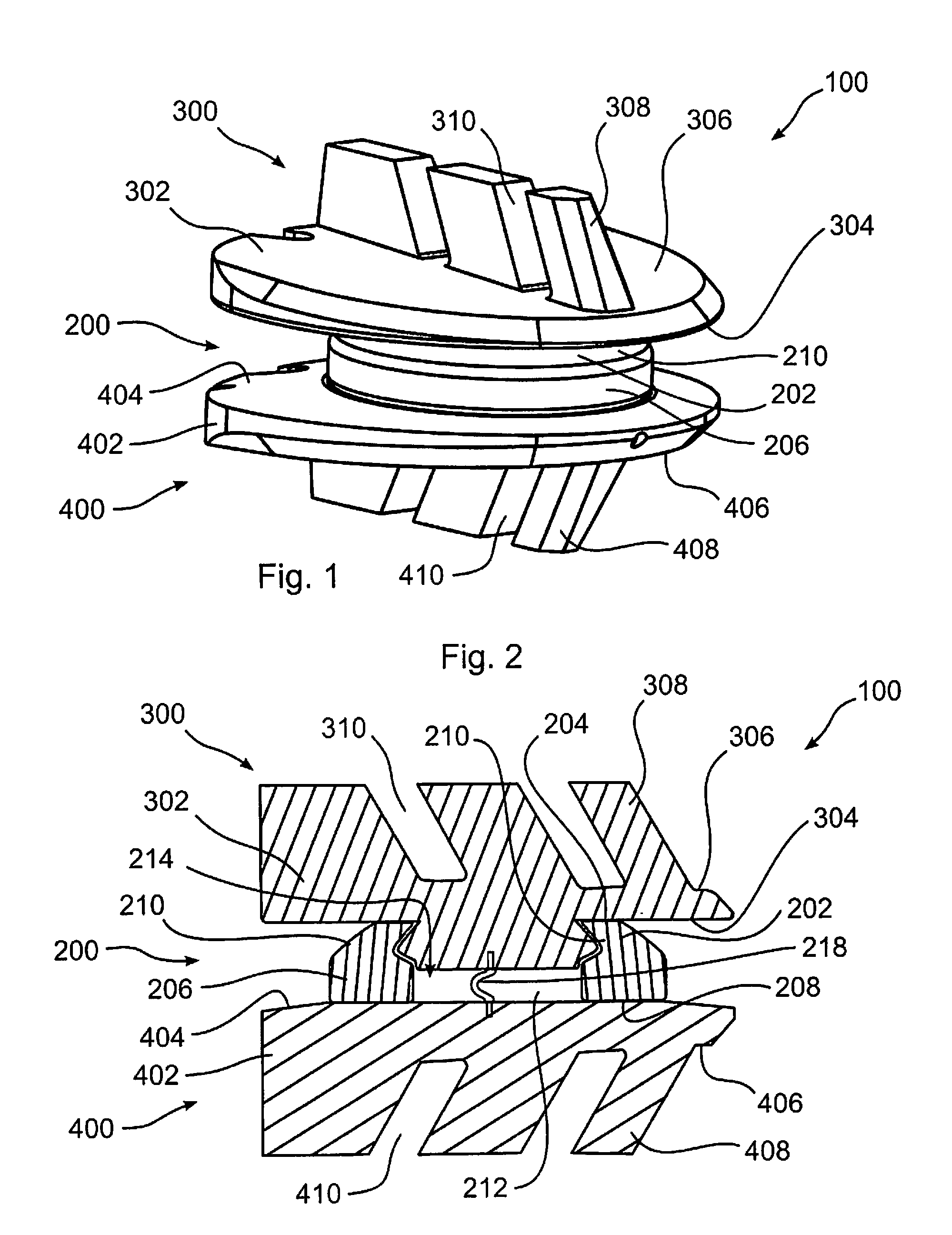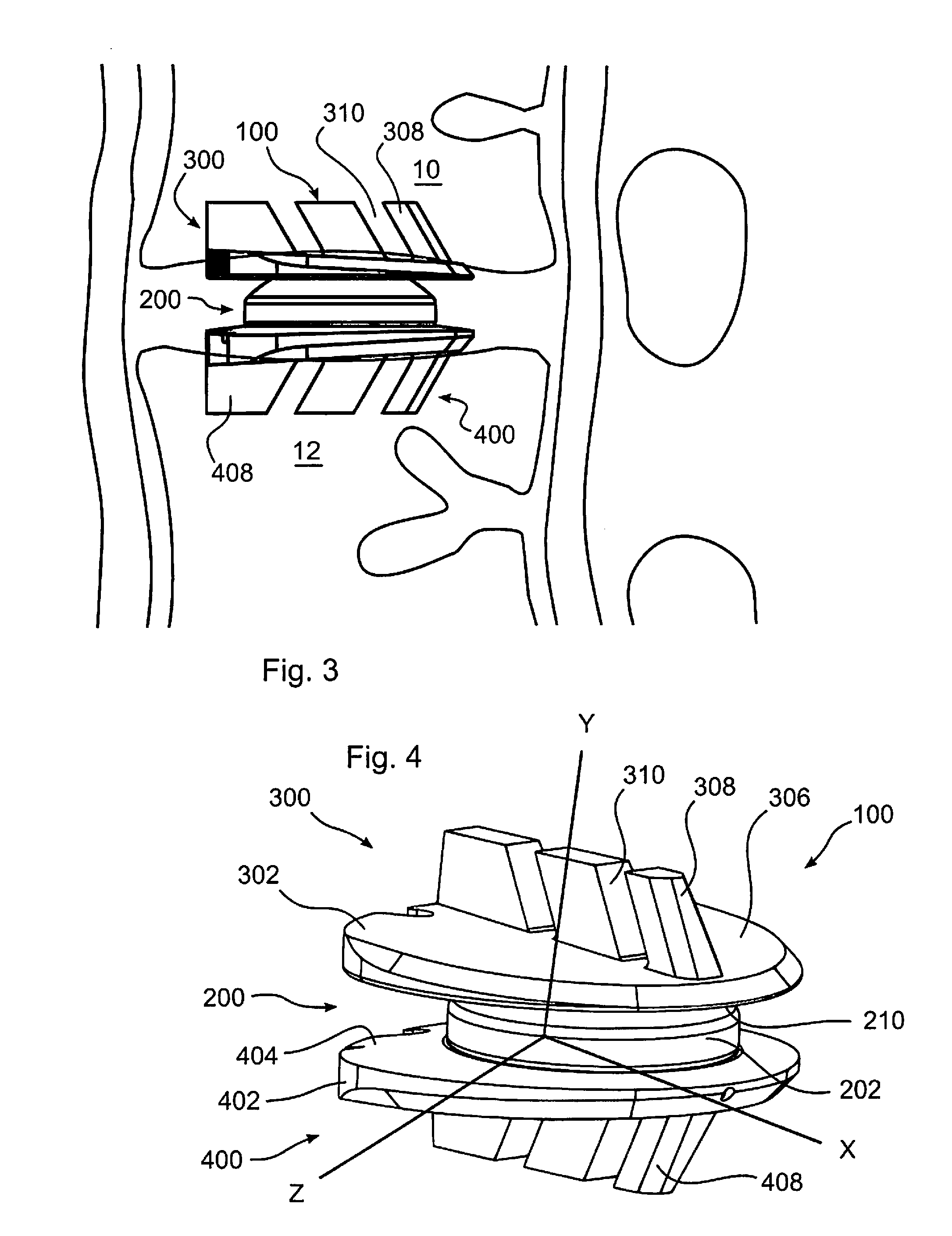Six Degree Spine Stabilization Devices and Methods
a spine and stabilization device technology, applied in the direction of prosthesis, spinal implants, coatings, etc., can solve the problems of spinal disc displacement or damage, leg pain, loss of muscle control, or even paralysis, and achieve the effect of directional stability
- Summary
- Abstract
- Description
- Claims
- Application Information
AI Technical Summary
Benefits of technology
Problems solved by technology
Method used
Image
Examples
Embodiment Construction
[0047]In the description which follows, any reference to direction or orientation is intended primarily and solely for purposes of illustration and is not intended in any way as a limitation to the scope of the present invention. Also, the particular embodiments described herein are not to be considered as limiting of the present invention.
[0048]Referring now to the figures, in which like reference numerals refer to like elements, FIGS. 1 and 2 illustrate an implant 100 in accordance with the invention, including a flexible core 200, a first support component 300, operative to contact a first engaging surface 204 of core 200, and a second support component 400, operative to contact an opposing second engaging surface 208 of core 200.
[0049]With reference to FIG. 3, implant 100 is operative, when positioned between adjacent bones of a joint, such as for example vertebrae 10, 12, to stabilize a joint formed by adjacent vertebrae. Implant 100 further enables natural kinematic movement o...
PUM
| Property | Measurement | Unit |
|---|---|---|
| size | aaaaa | aaaaa |
| pressure | aaaaa | aaaaa |
| relative distance | aaaaa | aaaaa |
Abstract
Description
Claims
Application Information
 Login to View More
Login to View More - R&D
- Intellectual Property
- Life Sciences
- Materials
- Tech Scout
- Unparalleled Data Quality
- Higher Quality Content
- 60% Fewer Hallucinations
Browse by: Latest US Patents, China's latest patents, Technical Efficacy Thesaurus, Application Domain, Technology Topic, Popular Technical Reports.
© 2025 PatSnap. All rights reserved.Legal|Privacy policy|Modern Slavery Act Transparency Statement|Sitemap|About US| Contact US: help@patsnap.com



